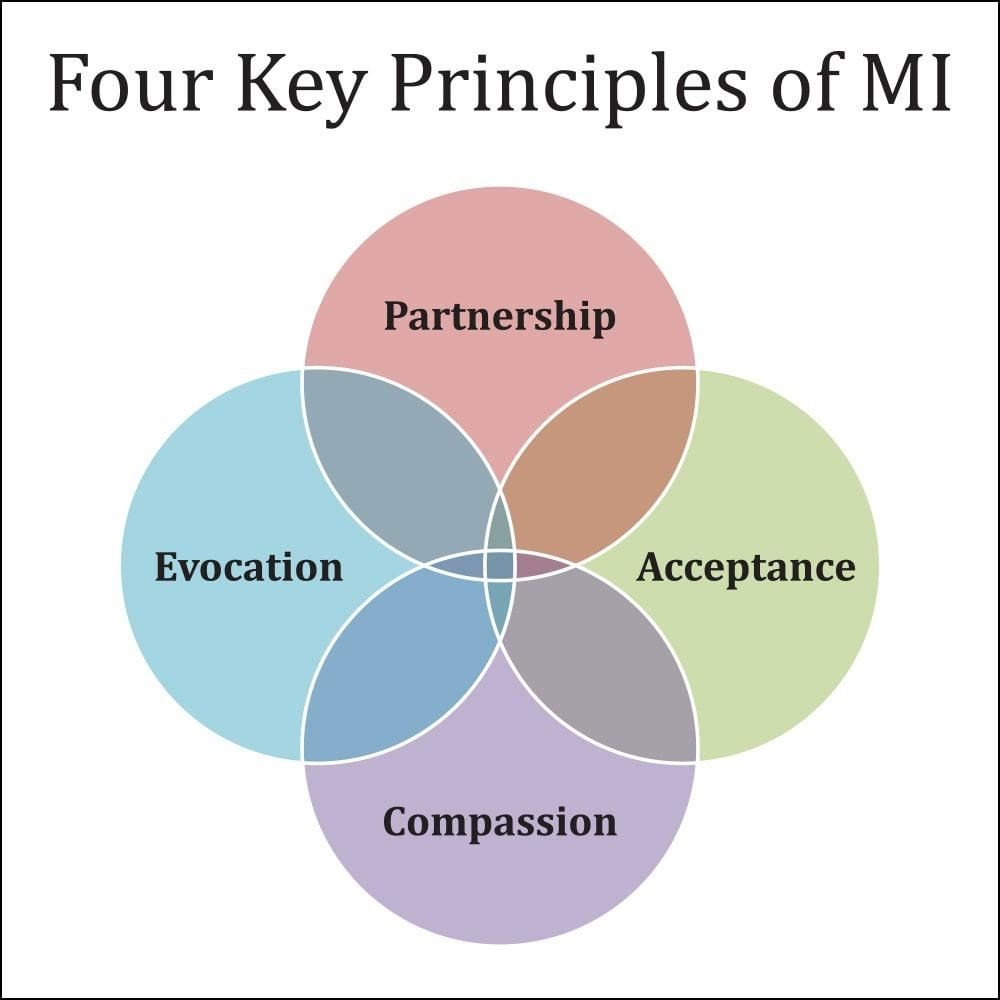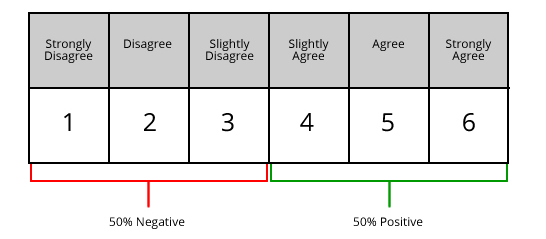Table of contents
1. What is motivational interviewing (MI)?
2. What are the core techniques of motivational interviewing?
3. How does motivational interviewing connect with UX design?
4. When should you conduct motivational interviewing in UX research?
5. Common pitfalls of motivational interviewing in UX research
6. What tools of motivational interviewing can you use in UX research?
7. Seven tips on how to apply motivational interviewing in your UX research
8. Final thoughts
1. What is motivational interviewing (MI)?
It’s an approach aiming to analyse the key drives of a person, reaffirming what they know about themselves. Clinical psychologists—Stephen Rollnick and William Richard Miller—described motivational interviewing as:
- A communication style sitting between attentive listening and helpful advice
- A collaborative process where the MI practitioner helps a person to change
- A respectful way of transforming the old beliefs into new ones
The core principles of motivational interviewing are partnership, evocation, compassion, and acceptance. By applying them, therapists help their patients be more open and share their experiences and feelings freely.

The four key principles of motivational interviewing (source: dentalcare.com).
Motivational interviewing prompts to change behaviour by establishing trust. Do you want to find out how to do that? Let’s explain the key techniques of motivational interviewing that can help.
2. What are the core techniques of motivational interviewing?
The main methods of motivational interviewing are based on the OARS model representing the basic interaction skills. So, let’s unravel what it means below.
2.1 Open-ended questions (O)
This technique encourages research participants to tell more about themselves. With open-ended questions, you won’t get simple “yes” or “no” answers. Your research participants will share more information with you. So, what are the best practices for creating open-ended questions and gathering more handy insights in motivational interviewing?
Here are some of them:
- Start your questions with “what if”, “why”, and “how”
- Prepare follow-up questions like “why have you decided to do…?” and “what do you think about…?” if you want to gather more information from your research participants
- Move from general questions to specific ones
Open-ended questions feel more conversational for your research participants and that, in turn, helps them feel more comfortable and tell you more information. Let’s assume you conduct a research interview about parking areas in Munich. You start your first questions with general phrases like “tell me more about,” and then you continue to ask specific questions about their positive and negative experiences.
Example:
- Tell me more about your parking experiences in Munich?
- What parking areas of Munich do you like and why?
2.2 Affirmative statements (A)
Use them if you want to show respect and appreciation towards your research participants. You can also express affirmative statements in a non-verbal manner, like making eye contact or nodding your head.
Affirming means you take steps to motivate your research participant to engage in the conversation with you. This tactic will also help you build trust and foster an open environment where your interviewees can feel secure and confident enough to give you information.
Example: It seems you like parking in Munich.
2.3 Reflective listening (R)
The key goal of this tactic is to understand what your participants mean when they answer your research questions. To achieve it, practice the following principles of reflective listening:
- Rephrasing: Try it to clarify if you’ve understood correctly what your research participants tell you.
- Repeating: Use it to show your interviewees that you actively listen to them.
- Reflection: Rephrase the emotions of your research participants to see if you can state in words what they can’t express.
- Paraphrasing: Summarise information from your interviewees to identify their feelings.
You can apply all these principles of reflective listening to your interviewing process to prevent breakdowns in communication. Make sure to use such phrases as “it seems you”, “it sounds you like”, “so you mean”, and “you wonder whether” if you want to increase the level of intimacy between you and a research participant.
Example: So, to be sure I’ve understood you correctly, you don’t like parking lots in Munich because it takes up to 20 minutes to find the place.
2.4 Summary (S)
Summing up what your participants have said during motivational interviewing will help you link different pieces of information together. And will show them that you empathise with their situation.
You can create summaries if you:
- Start with a statement that indicates a summary like “Here is what you’ve recently told me. Tell me if there is something that I’ve missed.”
- Use change statements—where participants expressed their drive to change. Here are some examples of them like “I know I can handle this problem” and “I plan to do something, but I’m not sure what it is.”
- Include both sides of the summary statement if a person expresses ambivalence. You can do it like this: “On the one hand, you like parking lots in Munich, but on the other hand, you experience some problems finding the right spot.”
- End your interview with an invitation. For instance, you can ask these questions such as “do you want to add anything to our conversation?” and “if it’s true, what are the other points you’d like to mention?”
Summaries ensure that the conversation is clear and understandable between you and a research participant. Keep in mind that your role as an interviewer is to share your understanding of your interviewees’ feelings.
Example: What I’ve heard is that you don’t like to park your car in the central part of Munich. You know there are parking lots located near the center, but something holds you back.
Using the OARS model requires the balance between these techniques and the flow of your conversation with the research participants. If you succeed in doing that, you’ll establish trust and rapport with them. But how does motivational interviewing align with UX design? Let’s discover below.
3. How does motivational interviewing connect with UX design?
Direct communication, empathy, and a person-centered approach are the core traits that motivational interviewing and UX design have in common. When you conduct UX research, you speak directly with your users, applying your empathetic skills to understand how they interact with your product.
Although UX design and motivational interviewing have similar methods, they’re different in their approaches. Let’s get to them below.
- UX research doesn’t aim to change human behaviour. Its goal is to understand the participants’ problems, habits, and behaviours. Motivational interviewing, however, strives to alter them.
- UX design focuses on how a user interacts with your product. Motivational interviewing is patient-centered and aims at changing patients’ beliefs.
If you’re aware of how these two approaches differ from one another, you’ll know which one of them is better to apply to your UX research.
4. When should you conduct motivational interviewing in UX research?
When you plan to attend a business conference, you’ll wear an official suit instead of a casual one. If you consider applying motivational interviewing to your UX research, you need to know when to do that. You can use this method if you want to:
- Find out what will drive potential users to try your product
- Research what products people don’t like and analyse their reviews
- Discover user pain points and how your service can help solve them
Motivational interviewing and UX research is a perfect combo for exploring what will drive your target audience to use the product.
5. Common pitfalls of motivational interviewing in UX research
When you know what traps await you, you can omit them while mixing motivational interviewing and UX research methods. So try NOT to:
- Have a strict interview structure. You can’t always plan conversations with your interviewees. Sometimes the best research insights you can get when you don’t follow the interview structure rigidly.
- Express your opinions about a research subject. While conducting the interview, the last thing you should do is tell your participants what you think about the topic. Your goal is to gather information from them and don’t push your agenda.
- Alter user habits and behaviours. Changing how your participants behave is the main principle in motivational interviewing, but not in UX design. In UX research, your goal is to understand what will prompt your participants to use the product.
- Listen to your research participants lightly. Being fully present during the interviewing session is a surefire way to conduct a successful UX research interview.
6. What tools of motivational interviewing can you use in UX research?
Here are some tools of motivational interviewing you can use in UX research.
6.1 Scales

The Likert scale (source: invisionapp.com)
If you notice your research participants can’t express what they mean in words, ask them to rate their answers from 1 to 6. In motivational interviewing, you can apply the format of a Likert scale, which looks like this:
- 1 – “Strongly disagree”
- 2 – “Disagree”
- 3 – “Slightly disagree”
- 4 – “Slightly agree”
- 5 – “Agree”
- 6 – “Strongly agree”
Such an approach will help you determine what participants think about your research study.
6.2 Follow-up questions
Once your interviewees give you numbers from a Likert scale, use follow-up questions to gather more information about your study topic. But how can you approach this?
Simply. Just ask why they rated the subject with a higher number. For example, your research participant assessed the Apple brand with 6, according to the Likert scale. You then ask them why they gave it this number instead of 4 or 5.
If your interviewees gave lower numbers, apply other tactics for follow-up questions such as:
- Clarifying information if they used vague terms
- Asking additional questions if you want to
- Emphasising a specific problem or the need to understand the emotions of your interviewees better
While interviewing, bear in mind to take notes of specific terms you want to clarify later with your research participants.
7. Seven tips on how to apply motivational interviewing in your UX research
Want to find out how you can integrate the practices of motivational interviewing into UX research? We’ve prepared a list of pro-tips for you. So try to:
- Take advantage of reflective listening. To gather more deep insights from your research participants, you need to create a safe listening environment. You can do this by engaging with them in a friendly manner, like making eye contact, smiling, and asking them if they want some coffee.
- Hone your empathetic skills. This will help you step into the shoes of your interviewees and understand their feelings and needs better. Improve your empathy by getting feedback on your listening skills and observing human behaviour.
- Ask open-ended questions. To create them, start by formulating broader themes connected to your research. Once done, develop general open-ended questions and break them down into specific ones.
- Learn how to build rapport with your participants. Knowing how to do that will help you get more insightful results for your UX research. You can establish rapport by telling a bit about yourself, outlining the research discussion, and thanking your participants for the interview.
- Be honest with your research participants. If you can’t share all information, you need to inform your interviewees about it at the beginning. This helps them decide if they want to partake in your UX research or not.
- Don’t push your agenda during the interview. Steering conversation to achieve your goals is a vital part of UX research. But you shouldn’t focus too much attention on it, since your interviewees will think you pressure them. To avoid this, don’t try to reach your set research goals and let the conversation produce its own results.
- Let your research participants express their thoughts freely. When you conduct UX research, don’t tell your participants what they should do or think. Just allow them to share their opinions openly with you during the interview.
Following these suggestions will help you gather detailed insights into the ways how your users think and behave.
8. Final thoughts
Understanding your users’ core values, beliefs, and drives is a surefire way to create a seamless UX experience for them. And that’s where motivational interviewing comes in handy. Combining this approach with UX research will help you create a safe environment where your users will be keener to open up and tell you more about what they think about your product.

